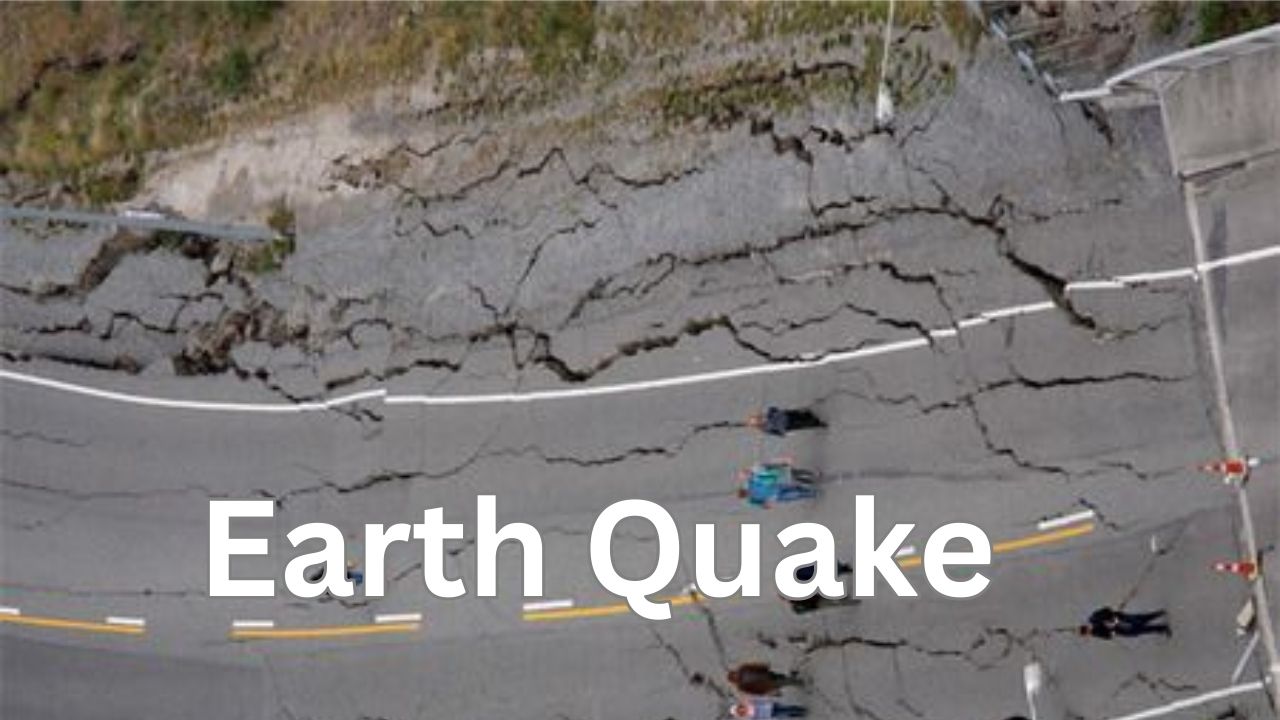What is Earth Quake
An earthquake is a natural phenomenon where the ground shakes violently due to the movement of tectonic plates beneath the Earth’s surface. This movement causes seismic waves that travel through the ground, resulting in the shaking felt on the surface. Earthquakes vary in magnitude and can cause significant damage to buildings and infrastructure, and in some cases, trigger other natural disasters such as tsunamis and landslides. It is important to be aware of the risks associated with earthquakes and to have an emergency plan in place in case of an earthquake.
What is causes earthquakes and where do they happen
Earthquakes are caused by the movement of tectonic plates, which are large pieces of the Earth’s crust that move slowly over time. When two plates collide, one may slide underneath the other (subduction), causing intense pressure and friction that can lead to seismic activity. Alternatively, two plates may grind against each other horizontally (strike-slip fault), or pull apart (divergent boundary), also leading to earthquakes.
Earthquakes can happen anywhere in the world, but are most common along the edges of tectonic plates, where the plates meet and interact with each other. These areas are known as fault zones or seismic zones. Some of the most active seismic zones in the world include the Pacific Ring of Fire, which encircles the Pacific Ocean, and the Alpine-Himalayan belt, which stretches from the Mediterranean to Southeast Asia
Why does the earth shake when there is an earthquake?
An earthquake occurs when two tectonic plates suddenly move past one another, causing a release of energy in the form of seismic waves. These waves radiate out from the point of the earthquake’s origin, called the hypocenter, and cause the ground to shake. The shaking of the Earth’s surface is a result of the propagation of these waves through the solid rock of the Earth’s crust. As the waves travel through the rock, they cause it to vibrate, which in turn creates the shaking felt at the surface. The severity of the shaking depends on the magnitude of the earthquake, the distance from the hypocenter, and the local geology.
How are earthquakes recorded?
Earthquakes are recorded by instruments called seismometers that detect the vibrations created by seismic waves. Seismometers consist of a stationary base and a movable mass, which remains in place while the earth moves. The movement of the mass is recorded as an electrical signal, which is amplified and displayed as a seismogram. Seismologists analyze the data to determine the magnitude, location, and depth of the earthquake.
How do scientists measure the size of earthquakes?
Scientists use seismometers to measure the size of earthquakes. Seismometers detect the vibrations created by earthquakes and produce seismograms. The magnitude of an earthquake is determined by analyzing the amplitude and duration of the seismic waves recorded on the seismogram. The Richter scale is a commonly used scale for measuring earthquake magnitude, which is based on the logarithm of the amplitude of the largest seismic wave recorded.
Can scientists predict earthquakes?
Scientists cannot predict earthquakes with complete accuracy, as the behavior of faults is complex and not fully understood. However, they can make probabilistic forecasts based on historical data and geologic observations. They use instruments to measure seismic activity and changes in the Earth’s surface, and can issue early warning systems to give people time to prepare for potentially dangerous quakes
How can scientists tell where the earthquake happened?
Scientists can determine where an earthquake happened by analyzing the seismic waves it generates. Seismic waves are energy waves that travel through the Earth and are detected by seismometers. By measuring the arrival times and amplitudes of these waves at multiple seismometer stations, scientists can triangulate the earthquake’s epicenter. They can also analyze the characteristics of the seismic waves to determine the earthquake’s depth and the type of fault that caused it. Other methods, such as GPS measurements and satellite imagery, can also provide information about the earthquake’s location and its effects on the Earth’s surface.
What to do During an Earthquake
During an earthquake, seek shelter under a sturdy desk or table, or crouch against an interior wall. Stay away from windows, tall furniture, and anything that could fall. If you are outside, move to an open area away from buildings and power lines. If you are in a vehicle, pull over to a clear location and stay inside until the shaking stops. After the quake, check for injuries and damage, and follow the guidance of emergency authorities.
What Causes an Earthquake?
An earthquake is caused by the sudden release of energy that has been stored in the Earth’s crust. This energy can be released in several ways, but most commonly occurs along a fault, which is a fracture in the Earth’s crust where the rock on either side has moved. As the plates on either side of a fault move past each other, they can become locked and the pressure builds up until it is suddenly released in the form of an earthquake. Earthquakes can also be caused by volcanic activity, landslides, and man-made activities such as underground mining and the construction of dams.
What is the difference between Seismograph and Richter scale?
A seismograph is an instrument used to measure and record the ground motion during an earthquake. It consists of a ground motion sensor, such as a mass on a spring, that is coupled to a recording device, such as a rotating drum or digital data logger. The seismograph produces a seismogram, which is a graphical representation of the ground motion.
The Richter scale, on the other hand, is a numerical scale used to measure the magnitude of an earthquake. It was developed by Charles Richter in the 1930s and is based on the amplitude of the largest seismic waves recorded by a seismograph. The Richter scale is logarithmic, meaning that each whole number increase represents a tenfold increase in the amplitude of the seismic waves and a 32-fold increase in the energy released by the earthquake.
In summary, a seismograph is an instrument used to measure ground motion during an earthquake, while the Richter scale is a numerical scale used to measure the magnitude of an earthquake based on the amplitude of seismic waves recorded by a seismograph.



